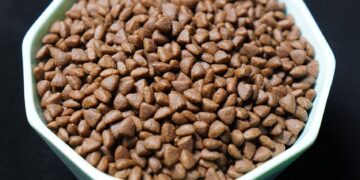Unlock Your Dog’s Best Health: Discover the Best Dog Food for Weight Loss and Joints
When it comes to our furry friends, we want nothing but the best. Like humans, maintaining a healthy weight and strong joints is crucial for a dog’s overall wellness and quality of life. Choosing the right food can be a game-changer for your pet’s health. This article delves deep into how to select the best dog food for weight loss and joint support, steering you towards making informed, beneficial choices for your beloved companion.
Understanding Dog Nutrition: Weight Control and Joint Health
Nutrition is pivotal for dogs, much like it is for every other creature. A balanced diet not only supports healthy weight maintenance but also fortifies the joints, especially in older or more active dogs. Let’s break down the key components to look for:
Proteins and Fats
High-quality proteins help in maintaining lean muscles, which is vital when managing a dog’s weight. Look for food containing real, whole protein sources such as chicken, fish, or beef as the primary ingredient. Healthy fats, like those from flaxseed or fish oil, aren’t just good for weight management—they also contribute essential fatty acids that promote joint health.
Fiber and Carbohydrates
Fiber plays an integral role in digestive health and helps keep your dog feeling full, which aids in weight management. Meanwhile, complex carbohydrates provide the necessary energy without spiking blood sugar levels. Opt for dog foods that utilize sweet potatoes or brown rice as their carbohydrate sources.
Vitamins and Minerals
Vitamins such as Vitamin E and C, and minerals like calcium and phosphorus, strengthen joints and overall body health. They can help increase joint mobility and bone strength, which is essential for overweight or older dogs.
Selecting the Best Dog Food for Weight Loss
Weight management is often the first step in preventing joint stress in dogs. Overweight dogs are at higher risk of arthritis and other related issues. Consider the following when choosing dog food designed for weight loss:
Reduced Caloric Content
The right food should have fewer calories but still provide all the essential nutrients. This ensures your dog doesn’t miss out on any vital components of their diet while losing weight.
Meat as the First Ingredient
Ensure the food lists a high-quality protein source as the top ingredient. This supports the maintenance of muscle mass during weight loss.
No Fillers or Artificial Additives
Avoid foods with unnecessary fillers like corn, soy, or by-products which add calories but little nutritional value. Additionally, steer clear of artificial colors and flavors which can harm your dog’s health.
Choosing Food to Boost Joint Health
Equally important is opting for food that supports joint health, particularly if you have an aging dog or a breed prone to joint issues.
Glucosamine and Chondroitin
These are two compounds often recommended by veterinarians for supporting joint health. Foods that include these supplements can help maintain cartilage and reduce joint pain.
Omega-3 Fatty Acids
These are beneficial for reducing inflammation. Foods rich in omega-3s, like those containing fish oil, can greatly benefit dogs suffering from stiff joints.
Antioxidants
Antioxidants fight free radicals in the body and reduce oxidative stress, which can exacerbate joint issues. Foods rich in antioxidants can help maintain healthy joints.
Practical Tips for Switching Dog Foods
Changing your dog’s diet should be a gradual process:
Start Slow
Introduce the new food gradually by mixing it with the current food. Slowly increase the proportion over a week or so to ease the transition and avoid digestive issues.
Monitor Your Dog
Keep an eye on your dog’s response to the new food. Look for positive changes in weight and mobility but also be alert for any signs of discomfort or allergic reactions.
Consult Your Veterinarian
It’s always wise to get a professional opinion, especially when dealing with weight and joint issues. Your vet can provide specified guidance tailored to your dog’s unique needs.
Final Thoughts
Remember, the right dog food not only helps in managing weight but also supports joint health, facilitating a vibrant, active life for your dog. By understanding the key nutritional requirements and carefully selecting the appropriate food, you’re setting up your four-legged friend for many healthy and happy years ahead.
Take this journey step by step, watch your pet thrive, and enjoy every moment with your healthier, happier dog!














































